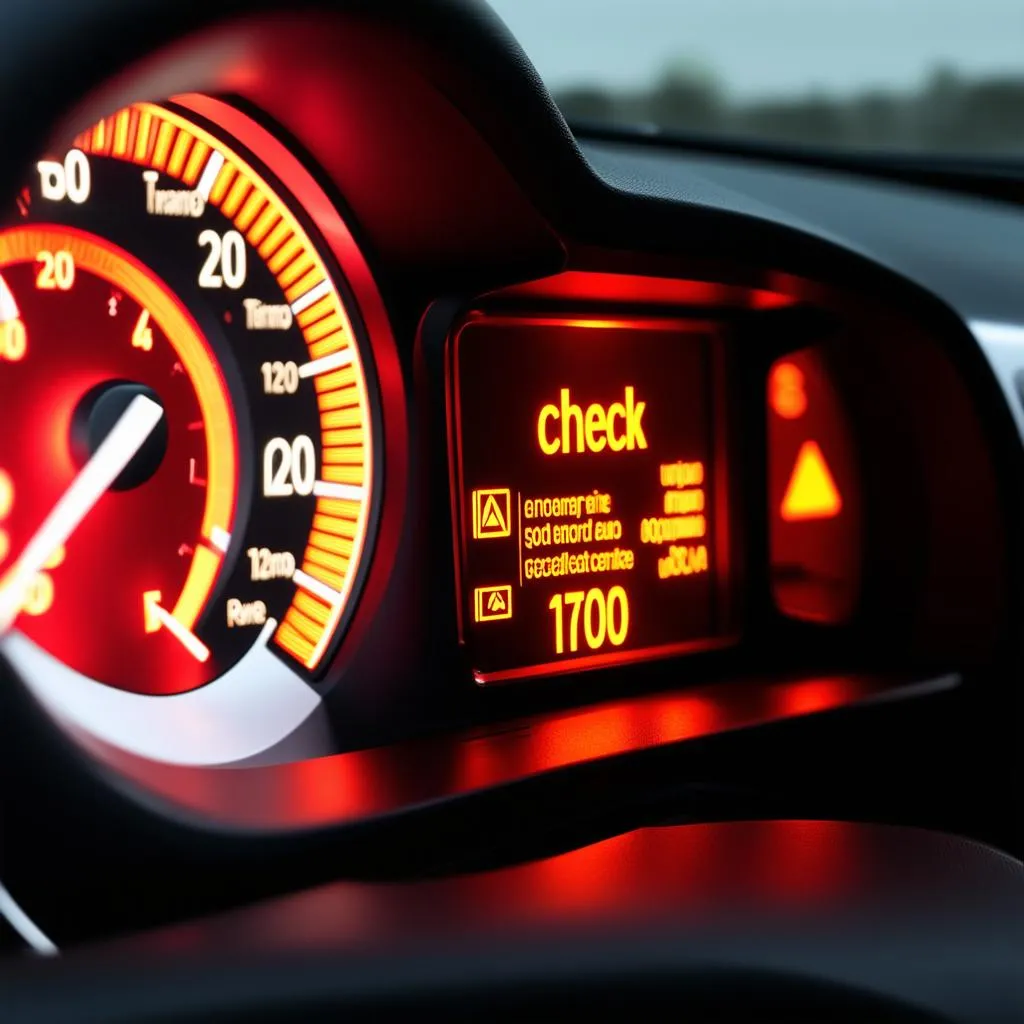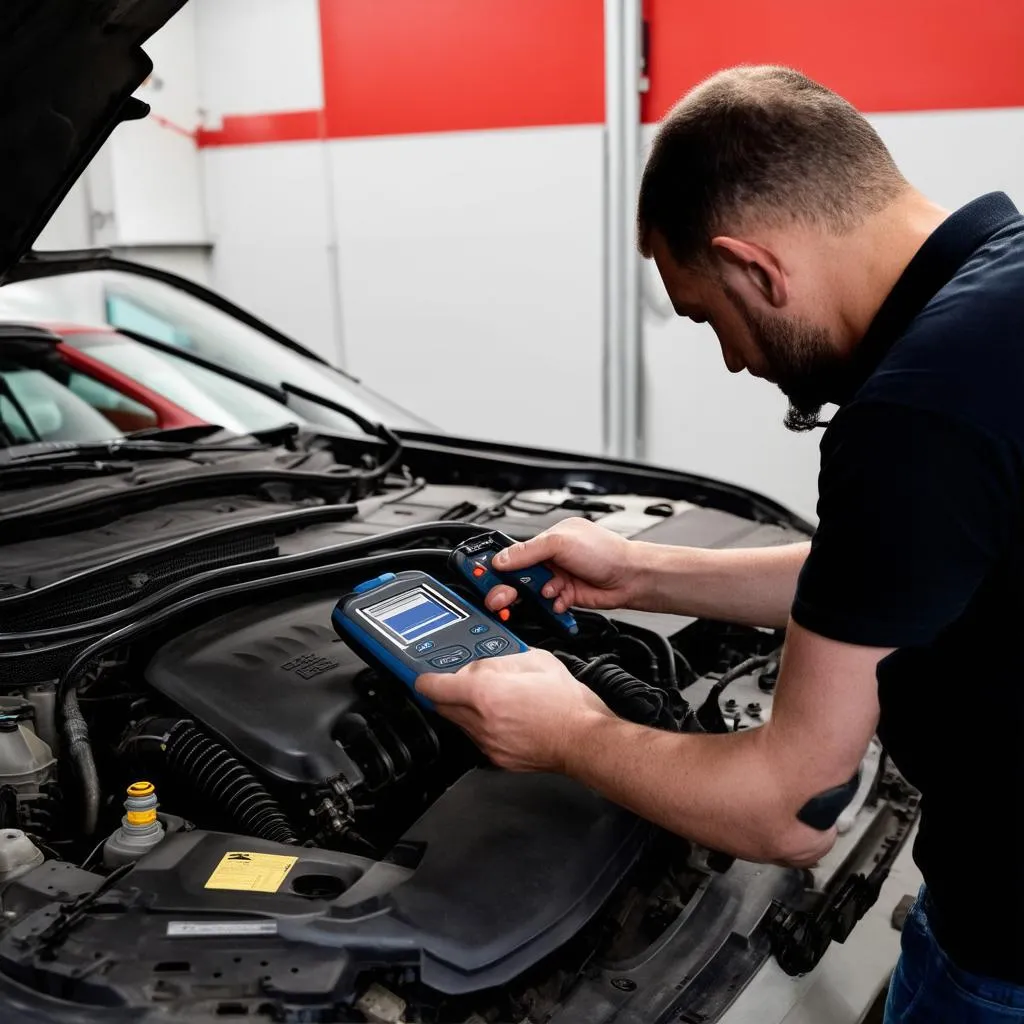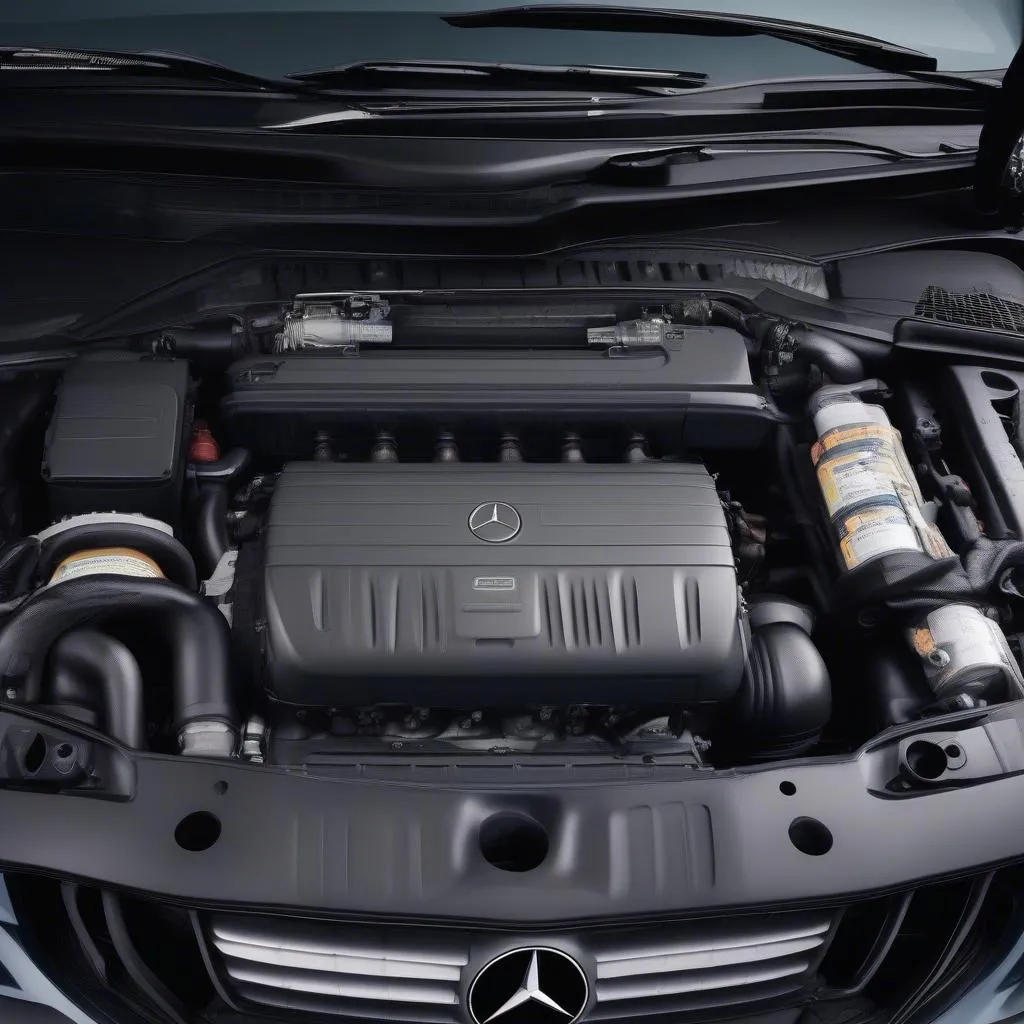The dreaded “check engine light.” For many Mercedes drivers, it’s a heart-stopping moment when it illuminates on their dashboard. But don’t panic – a Mercedes engine diagnostic light doesn’t always spell disaster. This comprehensive guide will break down the possible reasons behind this warning light and guide you on the next steps.
Understanding the Mercedes Engine Diagnostic Light
The engine diagnostic light, often appearing as a yellow or orange engine symbol, is your car’s way of communicating that it has detected a problem within the engine management system. This complex network of sensors and computers manages vital functions like fuel mixture, ignition timing, and emissions control.
Common Causes of the Engine Diagnostic Light
The reason for the engine diagnostic light can range from minor issues to more serious problems. Here are some of the most frequent culprits:
1. Loose Gas Cap:
Surprisingly, a loosely tightened or missing gas cap is a common trigger. This can disrupt the fuel system’s pressure and trigger the light.
2. Oxygen Sensor Issues:
Oxygen sensors monitor the exhaust gases to optimize the fuel-air mixture. A malfunctioning sensor can lead to reduced fuel efficiency and increased emissions, prompting the diagnostic light.
3. Mass Air Flow (MAF) Sensor Malfunction:
The MAF sensor measures the amount of air entering the engine. A faulty MAF sensor can disrupt the air-fuel ratio, leading to poor performance and potentially triggering the engine light.
4. Spark Plug or Ignition Coil Problems:
Worn-out spark plugs or failing ignition coils can cause misfires, reducing engine power and potentially harming the catalytic converter, resulting in the engine diagnostic light illuminating.
5. Catalytic Converter Failure:
The catalytic converter plays a crucial role in reducing harmful emissions. If it fails or becomes clogged, it can trigger the diagnostic light and lead to decreased engine performance.
6. Serious Engine Problems:
While less common, the engine diagnostic light can also indicate serious engine problems like internal engine damage, severe overheating, or transmission issues. In such cases, seeking immediate attention from a qualified mechanic is crucial.
 Mercedes dashboard with engine diagnostic light illuminated
Mercedes dashboard with engine diagnostic light illuminated
What to Do When the Engine Diagnostic Light Turns On
-
Don’t Panic: The light itself doesn’t necessarily mean you need to pull over immediately.
-
Check Your Gas Cap: Ensure it’s securely tightened. If loose, tighten it and monitor if the light resets after driving a short distance.
-
Monitor Your Driving: Note any changes in engine performance, such as rough idling, loss of power, or unusual noises. This information can be helpful when consulting a mechanic.
-
Get Your Vehicle Diagnosed: The most crucial step is to get your Mercedes diagnosed by a qualified mechanic specializing in Mercedes vehicles. They have the expertise and diagnostic tools to pinpoint the issue accurately.
Diagnosing the Engine Diagnostic Light
Mechanics use specialized diagnostic tools, often referred to as OBD-II scanners, to read the trouble codes stored in your Mercedes’ engine control unit (ECU). These codes provide specific insights into the potential source of the problem.
“Using the right diagnostic tools is key to quickly and accurately identifying the problem behind a check engine light,” explains automotive electronics specialist, Dr. Emily Carter, in her book “Modern Automotive Diagnostics.” “These tools provide valuable data that can save time and unnecessary repairs.”
DIY vs. Professional Diagnostics
While DIY OBD-II scanners are available, keep in mind that interpreting the codes accurately and diagnosing complex engine issues requires specialized knowledge and experience. Attempting repairs without the proper understanding can potentially lead to further damage.
Preventing Future Engine Diagnostic Light Issues
Regular vehicle maintenance is key to preventing many issues that trigger the engine diagnostic light:
- Follow Your Mercedes’ Recommended Maintenance Schedule: This typically includes regular oil changes, air filter replacements, and spark plug inspections.
- Address Warning Signs Promptly: Don’t ignore unusual noises, performance issues, or other warning lights. Early detection often leads to simpler and less costly repairs.
Frequently Asked Questions
Can I drive my Mercedes with the engine diagnostic light on?
While you might be able to drive short distances, it’s crucial to get the issue diagnosed as soon as possible. Ignoring the light could lead to further damage or even leave you stranded.
How much does it cost to fix an engine diagnostic light issue?
The cost varies widely depending on the underlying problem. A loose gas cap might be a simple fix, while a catalytic converter replacement can be expensive.
Can I use a generic OBD-II scanner on my Mercedes?
Yes, generic OBD-II scanners can read basic trouble codes. However, for more advanced diagnostics and Mercedes-specific codes, a specialized scanner might be necessary.
 Mechanic connecting a diagnostic tool to a Mercedes engine
Mechanic connecting a diagnostic tool to a Mercedes engine
Need Help with Your Mercedes Engine Diagnostic Light?
CARDIAGTECH offers a range of professional-grade diagnostic tools and resources for Mercedes vehicles. For expert advice and assistance, connect with us today.
Disclaimer: This information is for general knowledge and informational purposes only and does not constitute professional mechanical advice. Always consult with a qualified mechanic for any car repairs or before making any decisions related to your vehicle.


